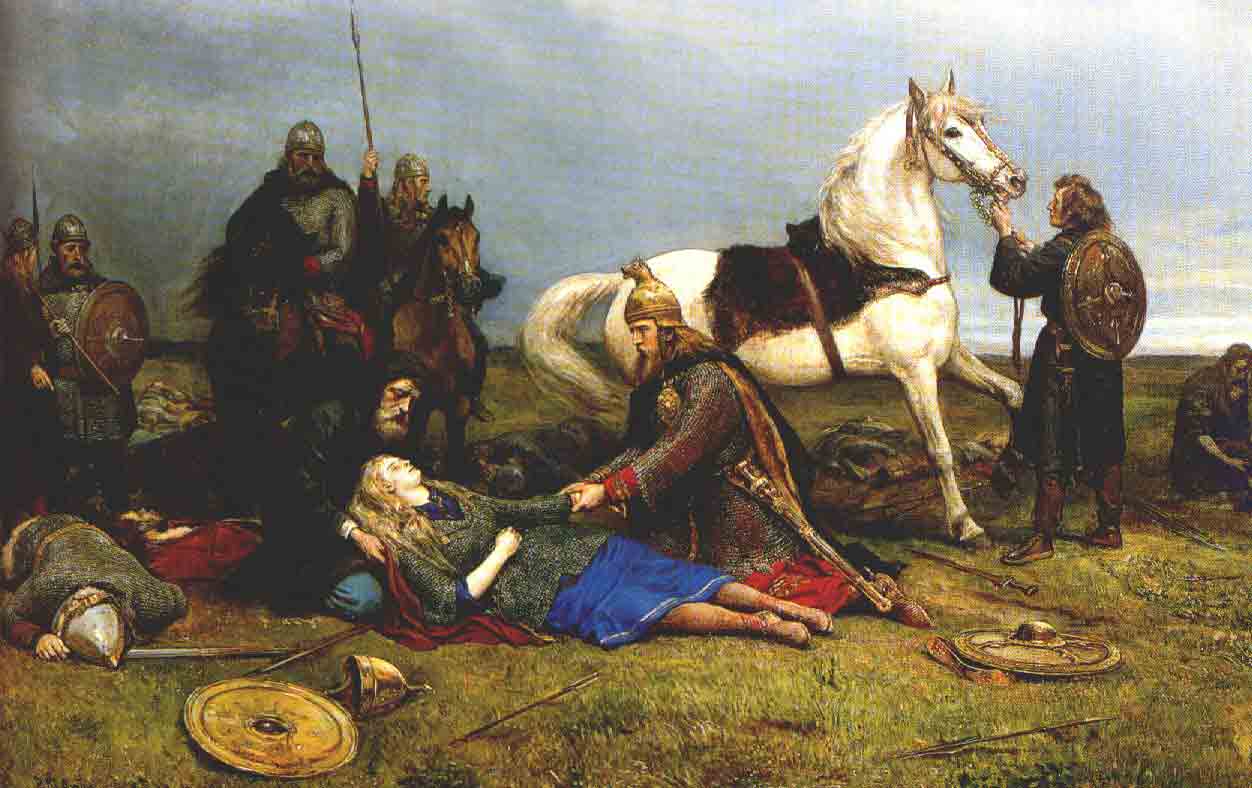'The Poetic Edda'

Should you read The Poetic Edda, the original source for all the great Norse myths, in order to understand them? Not really, other than to satisfy yourself that ancient Norse poetry is three bridges too far: old, foreign and metaphorical. The Poetic Edda (I have the Lee M. Hollander translation) is difficult material even with annotations and analysis. Like a crossword puzzle of anagrams. A better place to start is Wikipedia; read the entry for Völuspá (here) and go on from there.


Old gods, new gods. Danse macabre, Dødsdans... Above is Death from Ingmar Bergman's The Seventh Seal (1957), as is this quote:
"They dance away from the dawn and it's a solemn dance towards the dark lands, while the rain washes... and cleans the salt of their tears from their cheeks."

Odin's ravens perhaps? The painting is Fossefall (1889) by Norwegian painter Hans Gude.
The great fables were developed in times when life was more precarious and lives were shorter, and when Death could be personified. In Viking culture, Death was associated with the Norns, with Odin, and with the Valkyries. Perhaps Death is invisible today because there are so many people! It once must not have seemed that way, with fear carried on the wind, the sight and smell of burning, the nightmare of wars and plagues and famines and refugees on the roads. With climate change and global realignments, maybe it will be back.
